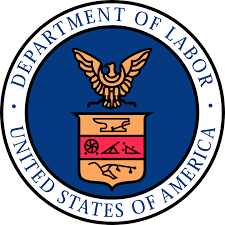The Department of Labor just announced that its Employee Benefits Security Administration (EBSA) is giving its opinion letter program a much-needed facelift. For those of us who’ve been around the retirement plan block a few times, this is welcome news—because clarity is hard to come by when navigating the bureaucratic jungle of ERISA and federal regulations.
On June 2, the DOL rolled out changes across multiple agencies as part of its push to better support compliance and make enforcement a little less like reading hieroglyphics without a Rosetta Stone. As part of this initiative, they’ve launched a new web page that makes it easier to browse past letters and request new ones. In a world where the wrong interpretation can land you in hot water with a class action lawsuit or a DOL investigation, a clear and official opinion is worth its weight in gold.
As Deputy Secretary of Labor Keith Sonderling put it, “Opinion letters are an important tool in ensuring workers and businesses alike have access to clear, practical guidance.” I don’t often agree with DOL press releases, but he’s not wrong.
What’s New?
The DOL’s modernization effort spans several agencies, not just EBSA. The Wage and Hour Division, VETS, OSHA, and MSHA are all in on the action. But for those of us in the ERISA world, the EBSA’s part of the upgrade is what matters most.
EBSA issues two kinds of letters:
· Advisory Opinions – These apply the law to specific facts. Think Advisory Opinion 2023-01A, where EBSA weighed in on Citigroup’s commitment to cover investment management fees in certain plans.
· Information Letters – These don’t apply the law to a particular situation, but clarify how the DOL interprets well-established legal principles. Example: the SECURE Act and bonding requirements for PEPs in Information Letter 2022-09-07.
The DOL is encouraging the public to submit requests, and if you’re a plan sponsor, attorney, TPA, or advisor dealing with a gray area, this is a tool you should have in your compliance toolbox.
How to Request an Opinion Letter (and Not Screw It Up)
Anyone can submit a request — employers, employees, consultants, even lawyers who are brave enough to admit they don’t know everything. But you’ll need to come prepared:
· Include the laws or regulations at issue.
· Lay out the facts — accurately and completely.
· Confirm that the issue isn’t currently being litigated or investigated.
· And yes, give them a phone number (welcome to 1996).
But here’s the fine print: don’t include confidential or sensitive info. The DOL may post their response publicly. So unless you want your plan’s dirty laundry hanging on a .gov site, keep it clean.
Also, don’t bother using this process to try and weasel out of a problem you’re already knee-deep in. If there’s a current investigation or lawsuit, the DOL won’t touch your request.
Why It Matters
For years, I’ve said that one of the biggest risks in the retirement plan space isn’t bad actors — it’s confused actors. The DOL’s guidance has been inconsistent, hard to find, and often outdated. This upgrade to the opinion letter program is a step in the right direction.
But let’s be clear: this is still government. “Modernization” is relative. The website might be easier to navigate, and the letters more accessible, but this won’t magically make ERISA any less complex or the DOL any faster to respond.
Still, it’s a useful move. In an age of excessive fee lawsuits, plan design scrutiny, and complex regulatory changes (looking at you, SECURE 2.0), having a place to ask the DOL, “Can I do this?” and maybe get a straight answer is a win.
At the end of the day, a well-timed opinion letter can be the difference between a prudent fiduciary and a defendant in federal court.







